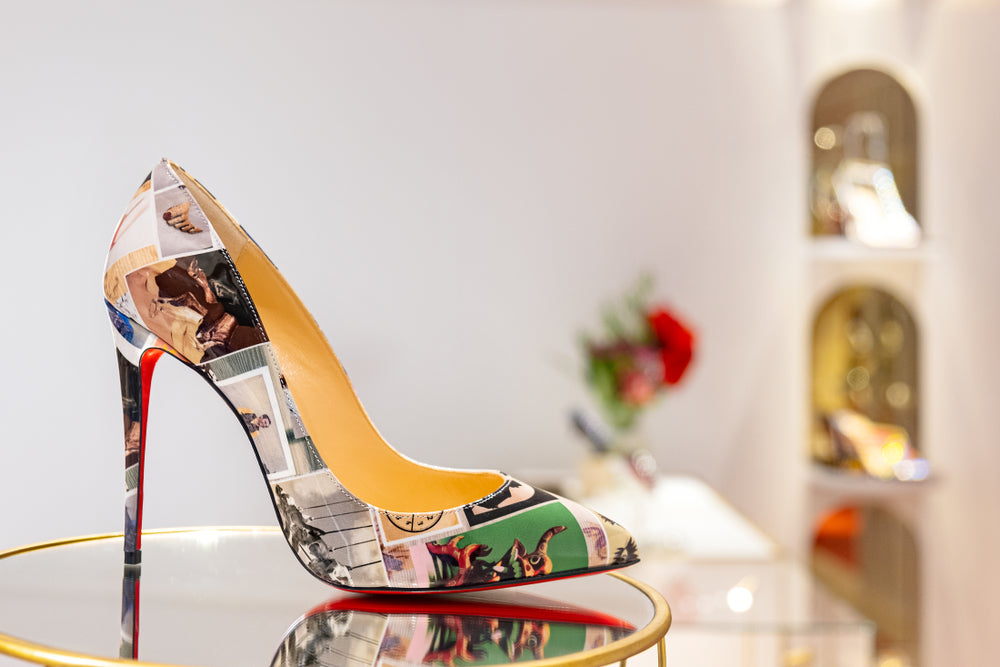Louis Vuitton Authenticity
Louis Vuitton, a name that instantly brings to mind luxury and craftsmanship, has captured the hearts of fashion enthusiasts for over a century. Founded by Louis Vuitton himself in 1854, this iconic French fashion house has forged a legacy rooted in impeccable design, relentless innovation, and enduring elegance. It all began with Louis Vuitton's first creation: a flat-topped trunk that revolutionized luggage design and became the foundation of the brand's success.
From its humble origins to becoming a global fashion powerhouse, Louis Vuitton has remained unwavering in its commitment to unparalleled quality and timeless style. With its renowned monogram canvas, exquisite leather goods, and numerous prestigious awards, Louis Vuitton has firmly established itself as the epitome of style and sophistication worldwide.
While the allure of owning a Louis Vuitton piece is undeniable, it's essential to ensure the authenticity of these coveted pieces. Unfortunately, the market is flooded with counterfeit replicas attempting to imitate the brand's distinctive designs and craftsmanship. This article will equip you with the knowledge and insights necessary to distinguish genuine Louis Vuitton pieces from counterfeits. Let's embark on a journey of discovery, unraveling the intricacies of Louis Vuitton authentication and unveiling the secrets behind the brand's timeless allure.
Logo and Branding
The Louis Vuitton logo, often called the LV monogram, holds immense significance as an iconic fashion symbol. Designed by Georges Vuitton, Louis Vuitton's son, it proudly displays his father's initials on the canvas, establishing it as the brand's corporate identity in 1896.
Did you know that Louis Vuitton was one of the first fashion brands to feature their monogram all over their bags? Other fashion houses later emulated this design choice, as seen in the Gucci logo.
In addition to the monogram, the logo incorporates a Japanese-inspired flower motif, adding a unique touch to the design. Louis Vuitton's color palette includes a versatile monochrome version, suitable for various surfaces and backgrounds, as well as a sophisticated gold-like hue that exudes elegance and reflects the essence of the fashion brand. Complementing the monogram, the brand also features stylized flower emblems, including one with pointed petals in a black rhombus and another in a rounded shape within a solid circle. These distinctive logos are prominently displayed on Louis Vuitton's exclusive leather and textile goods.
Over the years, the Louis Vuitton logo has undergone minimal changes since its inception, with the only alteration being removing the brand's name beneath the monogram.
When examining a Louis Vuitton piece, it's crucial to closely inspect the logo, ensuring it aligns with the official Louis Vuitton logo design. Also, look for consistency in the logo's elements and proportions, verifying no deviations from the recognized and established Louis Vuitton logo.
Hardware
Now, let's delve into Louis Vuitton hardware. Louis Vuitton offers a variety of hardware designs, including the iconic LV Circle and LV Twist closures. Since 1991, all Louis Vuitton bags have featured their heritage gold brass hardware with the distinctive "LV" logo. Older bags may have Swiss-made or ECLAIR zippers. In contrast, modern bags, especially those with colored zippers, may have YKK-branded zippers. Louis Vuitton rivets and studs have rounded shapes, with either "Louis Vuitton" or "LV" embossed.
It's important to note that all hardware on Louis Vuitton pieces should have a weighty feel and be stamped with the Louis Vuitton logo. The metal finishes on the hardware may vary depending on the specific design of the piece. Still, the quality should always be consistent throughout.
Stitching
Another factor to consider when authenticating a Louis Vuitton piece is stitching. Louis Vuitton pieces are renowned for their impeccable stitching quality. The stitches should be tiny, closely spaced, and evenly done. Louis Vuitton employs various techniques, including saddle stitching, which involves hand-sewing two needles simultaneously through each hole for added durability. In 2019, Louis Vuitton introduced the "New Wave" collection, featuring quilting and a different stitching pattern than the brand's traditional pieces, showcasing how Louis Vuitton continuously innovates while maintaining its signature craftsmanship.
Leather and Canvas
Louis Vuitton utilizes various high-quality leather and canvas materials, including calfskin, lambskin, and exotic skins like crocodile and alligator. One of their most iconic patterns, the Damier Canvas, was introduced in 1888, followed by the Monogram Canvas in 1896.
In 2010, Louis Vuitton continued to innovate by introducing new materials such as Empreinte Leather. This exquisite leather features a distinctive textured pattern crafted from top-quality calfskin, providing a luxurious and durable feel. This constant innovation in materials sets Louis Vuitton apart from other luxury brands.
When examining the leather of Louis Vuitton pieces, it should feel soft, supple, and free from any scratches or marks. On the other hand, the canvas should have a substantial and durable texture. The design pattern on the canvas should be consistent and uniform throughout the piece, without any blurriness or fading. Authentic Louis Vuitton canvas often features a slightly raised texture, adding to its distinctiveness.
Serial Number and Date Codes
Contrary to popular belief, Louis Vuitton handbags (excluding luggage and rare limited-edition pieces) do not have serial numbers. Instead, Louis Vuitton pieces have "date codes" stamped either on interior tags or directly on the interior linings to indicate the piece's date and location of manufacture. Note that Date Codes are not used for authentication purposes but can help you partially authenticate your Louis Vuitton pieces.
Louis Vuitton has included date codes in their bags, small leather goods, and most accessories since the 1980s. The date code format has changed over the years. Still, it typically includes two letters and four numbers that indicate the piece's date and location. As of March 2021, Louis Vuitton has started discreetly embedding microchips in their pieces instead of using date codes.
The date code can be directly embossed into the fabric or found on a rectangular leather tab sewn into an interior seam. Some older models may emboss the date codes near the handles, and the leather used for the tab should match the bag's trim material. The date code can also be found on a tag in a pocket, inside or outside the bag. For embossed date codes, check near the top edge of the seam of an interior pocket. Foil stamping is another method used for printing date codes. Finally, verify that the country indicated by the factory code matches the "made in" country stamped on the bag to avoid counterfeit pieces.
Owning authentic Louis Vuitton pieces goes beyond possessing a luxury fashion. It symbolizes the brand's heritage, expertise, and craftsmanship. Every detail contributes to the brand's excellence, from the logo and branding to the quality of the hardware, stitching, leather, canvas, and serial number. Whether you prefer the classic monogram pattern or the brand's newer designs, Louis Vuitton continues to innovate while maintaining its signature style, making it a fashion powerhouse that's here to stay!









